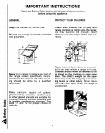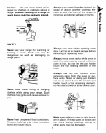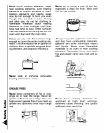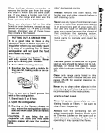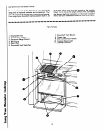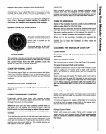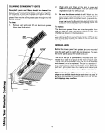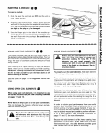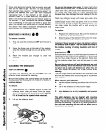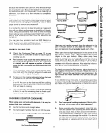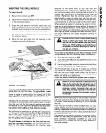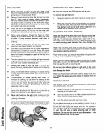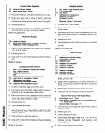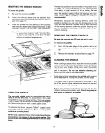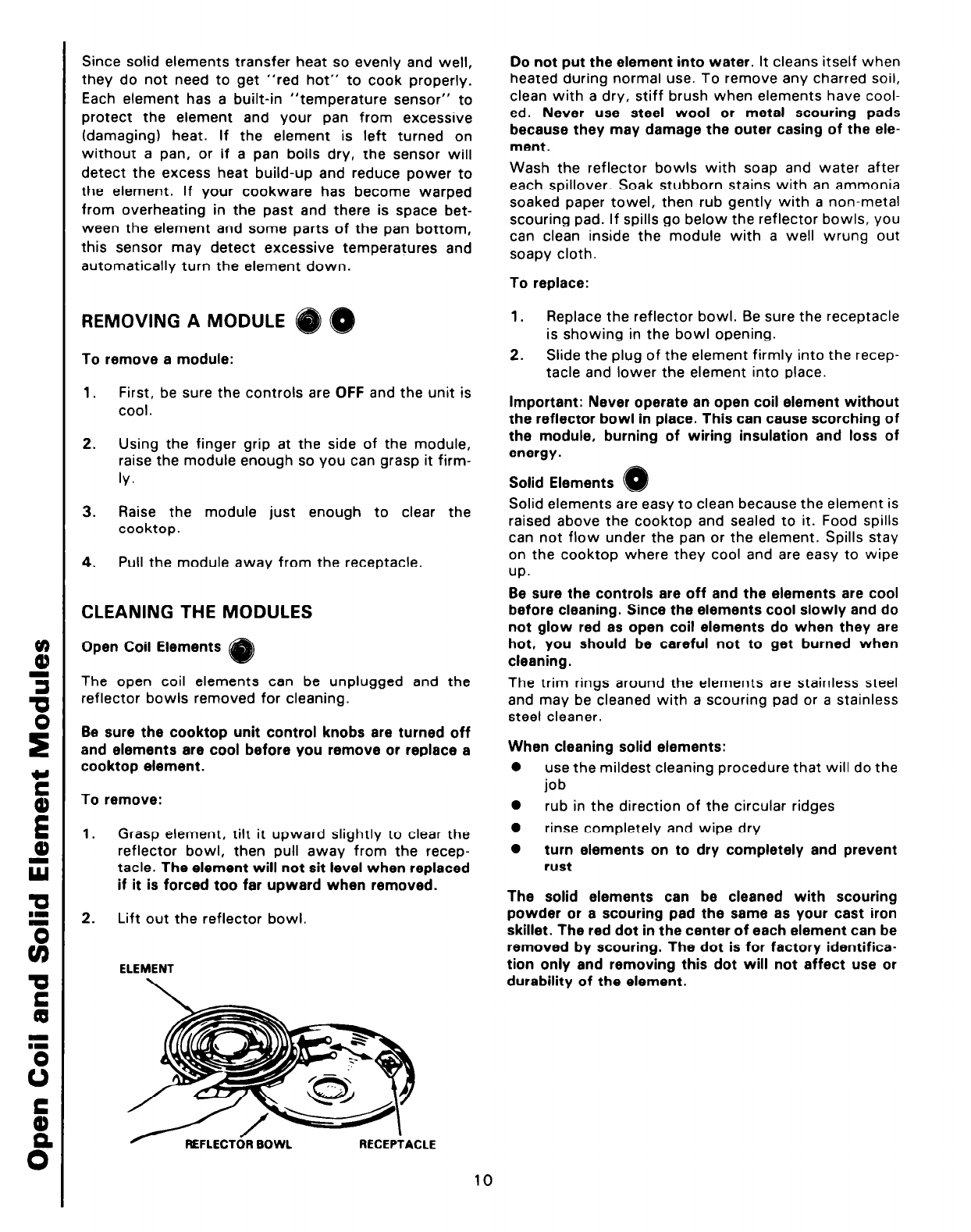
Since solid elements transfer heat so evenly and well,
they do not need to get “red hot” to cook properly.
Each element has a built-in “temperature sensor” to
protect the element and your pan from excessive
(damaging) heat. If the element is left turned on
without a pan, or if a pan boils dry, the sensor will
detect the excess heat build-up and reduce power to
the element. If your cookware has become warped
from overheating in the past and there is space bet-
ween the element and some parts of the pan bottom,
this sensor may detect excessive temperatures and
automatically turn the element down.
REMOVING A MODULE
#D
To remove a module:
1. First, be sure the controls are OFF and the unit is
cool.
2. Using the finger grip at the side of the module,
raise the module enough so you can grasp it firm-
IY.
3. Raise the module just enough to clear the
cooktop.
4. Pull the module away from the receptacle.
CLEANING THE MODULES
Open Coil Elements
The open coil elements can be unplugged and the
reflector bowls removed for cleaning.
Be sure the cooktop unit control knobs are turned off
and elements are cool before you remove or replace a
cooktop element.
To remove:
1. Grasp element, tilt it upward slightly to clear the
reflector bowl, then pull away from the recep-
tacle. The element will not sit level when replaced
if it is forced too far upward when removed.
2.
Lift out the reflector bowl.
ELEMENT
/
REFLECT& BOWL
RECEPTACLE
10
Do not put the element into water. It cleans itself when
heated during normal use. To remove any charred soil,
clean with a dry, stiff brush when elements have cool-
ed. Never use steel wool or metal scouring pads
because they may damage the outer casing of the ele-
ment.
Wash the reflector bowls with soap and water after
each spillover. Soak stubborn stains with an ammonia
soaked paper towel, then rub gently with a non-metal
scouring pad. If spills go below the reflector bowls, you
can clean inside the module with a well wrung out
soapy cloth.
To replace:
1. Replace the reflector bowl. Be sure the receptacle
is showing in the bowl opening.
2.
Slide the plug of the element firmly into the recep-
tacle and lower the element into place.
Important: Never operate an open coil element without
the reflector bowl in place. This can cause scorching of
the module, burning of wiring insulation and loss of
energy.
Solid Elements
e
Solid elements are easy to clean because the element is
raised above the cooktop and sealed to it. Food spills
can not flow under the pan or the element. Spills stay
on the cooktop where they cool and are easy to wipe
up.
Be sure the controls are off and the elements are cool
before cleaning. Since the elements cool slowly and do
not glow red as open coil elements do when they are
hot, you should be careful not to get burned when
cleaning.
The trim rings around the elements are stainless steel
and may be cleaned with a scouring pad or a stainless
steel cleaner.
When cleaning solid elements:
0
use the mildest cleaning procedure that will do the
job
0
rub in the direction of the circular ridges
0
rinse completely and wipe dry
0
turn elements on to dry completely and prevent
rust
The solid elements can be cleaned with scouring
powder or a scouring pad the same as your cast iron
skillet. The red dot in the center of each element can be
removed by scouring. The dot is for factory identifica-
tion only and removing this dot will not affect use or
durability of the element.



